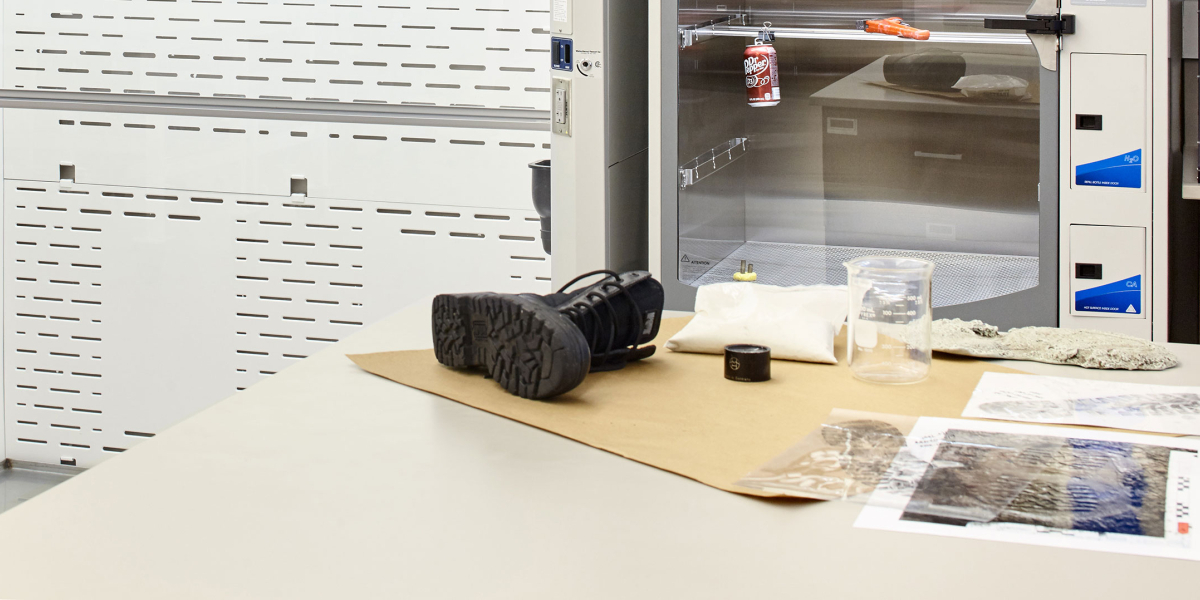How to handle and preserve wet DNA evidence

DNA forensic evidence may be the most powerful tool for convicting the guilty and exonerating the innocent, so handling DNA evidence properly is critical. The integrity of DNA evidence depends on properly processing biological material. There are three main concerns when processing biological evidence for DNA:
- Health and safety of persons - handling of biohazardous evidence
- Integrity of evidence - reducing the risk of cross-contamination
- Preservation of DNA material - effectively drying evidence

Health and Safety
DNA found in wet evidence is typically collected from blood and body fluids such as semen and saliva. All blood and body fluids need to be handled as biohazards. The publication Safety for the Forensic Identification Specialist includes a list of biohazards that forensic identification specialists may be exposed to while handling evidence seized from a crime scene (1). The greatest risks involve Hepatitis B, HIV, tuberculosis, and other bacterial or fungal infections. These types of biohazard threats are classified at Biosafety Level 2 (2).
Although the greatest risk of infection to personnel processing evidence is through skin or mucus membrane contact, airborne biohazards are also a concern. To prevent aerosol exposure, all evidence should be handled and stored under conditions where dried blood, bacteria or fungi will not become airborne (3).
Specialized evidence drying cabinets address the health and safety issues of drying evidence that may contain biohazards. These cabinets use prefiltered air to dry wet evidence. To remove biohazards and odors, air is exhausted through filters as well. Evidence drying cabinets greatly increase the safety of personnel processing the evidence, as well as others working in the building by isolating and containing biohazards to a specific area that can easily be decontaminated.
Sample Integrity
Maintaining the integrity of DNA evidence is another area of concern that evidence drying cabinets address. The storage area of the cabinet can be secured to maintain proper chain of custody. Intake filters prevent DNA or trace evidence from being introduced from outside the cabinet.
It’s important to dry and process the evidence from each individual in the case separately. Isolating evidence in the clean, DNA-free environment of a decontaminated evidence drying cabinet greatly reduces the risk of cross contamination.
Long Term Preservation
When evidence is processed and stored correctly, evidence drying cabinets ensure that DNA samples can be obtained for many years after the initial collection. To stop bacteria growth from degrading DNA, all moisture must be removed from the evidence before it is stored. To accomplish this, evidence drying cabinets move filtered air over evidence to reduce drying time and ensure all areas of the evidence are dried properly. Dried biological material that potentially contains DNA can typically be sealed and stored indefinitely (4).
READ MORE ABOUT EVIDENCE DRYING CABINETS
Bibliography
Cockle, D M.A., ‘Evidence Drying Cabinets’, Royal Canadian Mounted Police, 2008, available: http://www.rcmp-grc.gc.ca/fsis-ssji/firs-srij/bulletins/dc-as-cab-arm-eng.htm (accessed 15 March 2012).
Reference List
1) Masters, Nancy E; Safety for the Forensic Identification Specialist. Lightning Powder Company Inc. , Salem, Oregon 1995 (Plog, 1998 In, Masters 1995:28)
2) National Safety Council; Accident Prevention Manual for Business and Industry Administration & Programs. 12th Edition. Green Cross for Safety, Itasca, Illinois, 2001 pg 584
3) Plog, Barbara A. (editor) Fundamentals of Industrial Hygiene, 3rd Edition, National Safety Council:7 1998 (updated in 2002)
4) Sensabaugh, G.F; Dried Samples: Body Fluids 9 DNA Typing of Biological Evidence Material In Ancient DNA edited by B. Herrmann & S. Hummel, Springer-Verlag, New York 1994
| chevron_left | The Axiom takes on USP <797> | Articles | 3 Explosion-Proof Fume Hood Myths | chevron_right |






